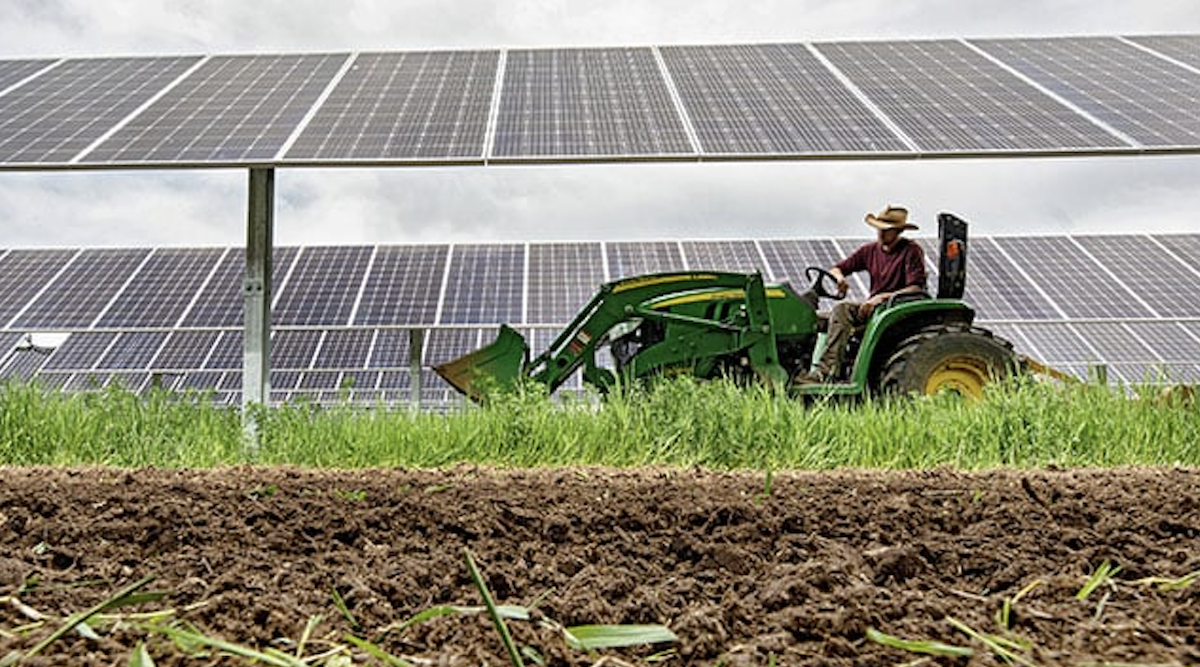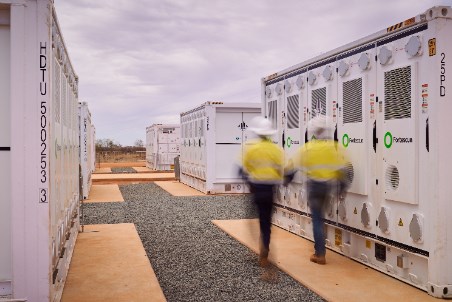Blue State Steps Up To Save US Farms With Solar Power – CleanTechnica

Report on New Jersey’s Dual-Use Solar Energy Pilot Program and its Alignment with Sustainable Development Goals (SDGs)
Introduction: Advancing Sustainable Development through Agrivoltaics
- New Jersey has initiated a three-year “Dual-Use Solar Energy Pilot Program” to integrate solar energy generation with agricultural land use, a practice known as agrivoltaics.
- This initiative is a strategic response to economic pressures on farmers and the imperative to expand renewable energy, directly contributing to several United Nations Sustainable Development Goals (SDGs).
- The program aims to provide farmers with a reliable new revenue stream, enhancing economic stability and promoting sustainable agriculture in alignment with SDG 2 (Zero Hunger) and SDG 8 (Decent Work and Economic Growth).
Agrivoltaics: A Multifaceted Approach to Sustainability
Dual-use solar, or agrivoltaics, is an innovative approach that maximizes land-use efficiency by co-locating agricultural activities and solar power generation. This model offers numerous benefits that support global sustainability targets.
- SDG 7 (Affordable and Clean Energy): The primary function is to generate clean, renewable electricity, increasing the supply of affordable and sustainable energy.
- SDG 2 (Zero Hunger): It allows for the continuation of farming, including crop cultivation and livestock grazing, thereby supporting food security and the viability of small-scale farms.
- SDG 15 (Life on Land): Agrivoltaic projects can be designed to enhance biodiversity by creating habitats for pollinators or improving soil health through managed grazing, which reduces the need for mechanical mowing.
- SDG 13 (Climate Action): By expanding solar energy capacity, the practice serves as a direct measure to mitigate climate change.
- SDG 9 (Industry, Innovation, and Infrastructure): The development and implementation of agrivoltaics represent a significant innovation in both the energy and agricultural sectors, building resilient infrastructure.
The New Jersey Dual-Use Solar Energy Pilot Program: Objectives and Implementation
The pilot program, administered by Rutgers University for the New Jersey Board of Public Utilities (NJBPU), is designed to translate research into widespread commercial practice.
Program Objectives
- To establish a new revenue source for farmers in the Garden State, thereby strengthening the agricultural economy.
- To generate 200 megawatts of solar energy on designated farmland.
- To collect data and research results from participants to inform the creation of a permanent, statewide program with standardized construction and operation protocols.
Implementation Status
- Despite challenges related to state land conservation regulations and complex incentive programs, the program has shown significant initial progress.
- As of August 26, 28 projects had been pre-qualified to apply, representing a potential capacity of nearly 126 megawatts.
- The official application period is scheduled from January 14 to February 25.
Broader Impact on State Energy Policy and SDG Achievement
- The agrivoltaics pilot is a crucial element of New Jersey’s strategy to meet its renewable energy targets, especially given challenges in developing other resources such as offshore wind.
- Distributed solar energy is one of the state’s most viable in-state power generation resources. New Jersey already has over 5.2 gigawatts of installed solar capacity, which supports approximately 7,000 jobs, contributing to SDG 7 and SDG 8.
- By successfully integrating solar development with its agricultural heritage, New Jersey can create a scalable model for other densely populated regions seeking to achieve climate and sustainability goals without sacrificing valuable farmland. This approach provides a practical pathway to advancing SDG 11 (Sustainable Cities and Communities) and SDG 13 (Climate Action).
Analysis of Sustainable Development Goals in the Article
1. Which SDGs are addressed or connected to the issues highlighted in the article?
The article on New Jersey’s dual-use solar power pilot program addresses several interconnected Sustainable Development Goals (SDGs) by focusing on the integration of renewable energy with agriculture. The primary SDGs identified are:
- SDG 2: Zero Hunger: The article discusses supporting farmers, improving land use for agriculture, and creating resilient farming practices.
- SDG 7: Affordable and Clean Energy: The core theme is the expansion of solar power as a clean energy source.
- SDG 8: Decent Work and Economic Growth: The program aims to provide farmers with new revenue streams and supports jobs in the solar industry.
- SDG 9: Industry, Innovation, and Infrastructure: The article highlights an innovative approach (agrivoltaics) and a pilot program designed to research and scale up this new technology.
- SDG 13: Climate Action: The expansion of solar energy is a direct measure to combat climate change by increasing the share of renewables.
- SDG 15: Life on Land: The article mentions the benefits of agrivoltaics for biodiversity, pollinator habitats, and soil health.
2. What specific targets under those SDGs can be identified based on the article’s content?
Based on the article’s discussion of agrivoltaics, the following specific SDG targets can be identified:
- Target 2.3: By 2030, double the agricultural productivity and incomes of small-scale food producers, in particular… family farmers…
- Explanation: The article directly addresses this by stating the program’s aim is to “provide farmers with a reliable new revenue stream while they continue to farm the same land.” This is particularly relevant for New Jersey, where “the average size of farms is small.”
- Target 2.4: By 2030, ensure sustainable food production systems and implement resilient agricultural practices that increase productivity and production, that help maintain ecosystems…
- Explanation: The article describes how agrivoltaics can lead to more resilient practices. For example, it notes that “the partially shaded environment of solar panels helps improve the quality of fodder for the sheep, leading to a healthier flock” and that livestock “help build soil health.”
- Target 7.2: By 2030, increase substantially the share of renewable energy in the global energy mix.
- Explanation: The entire initiative is focused on increasing solar power generation. The article mentions New Jersey’s “11-gigawatt offshore wind goal” is out of reach, making solar crucial. The pilot program has a “200-megawatt goal,” contributing to the state’s total installed capacity of “more than 5.2 gigawatts.”
- Target 8.4: Improve progressively, through 2030, global resource efficiency in consumption and production…
- Explanation: The concept of “dual-use” or agrivoltaics is a direct application of this target. The article states that “the aim of dual-use is to maximize land use efficiency with a combination of solar power and farming,” which is a clear effort to improve the efficiency of land as a resource.
- Target 9.5: Enhance scientific research, upgrade the technological capabilities of industrial sectors in all countries… encouraging innovation…
- Explanation: The “Dual-Use Solar Energy Pilot Program” is a state-sponsored initiative to take agrivoltaics “from research to practice.” The article explains that the program “will generate research results needed to inform a permanent program,” which directly supports research and innovation in clean technology.
- Target 15.5: Take urgent and significant action to reduce the degradation of natural habitats, halt the loss of biodiversity…
- Explanation: The article highlights that early adopters of agrivoltaics have focused on arrays that “allow room for habitat restoration and biodiversity, benefiting nearby crops with healthy pollinator populations.” This shows a direct link between the practice and the goal of halting biodiversity loss.
3. Are there any indicators mentioned or implied in the article that can be used to measure progress towards the identified targets?
Yes, the article contains several quantitative and qualitative indicators that can be used to measure progress:
- For SDG 7 (Clean Energy):
- Megawatts of new solar capacity installed: The article provides specific figures, such as the pilot program’s “200-megawatt goal” and the “almost 126 megawatts” from the 28 pre-qualified projects.
- Total installed solar capacity: The state’s current capacity is mentioned as “more than 5.2 gigawatts.”
- For SDG 2 (Zero Hunger) & SDG 8 (Decent Work):
- Number of participating farms: The article states that “28 projects” have been pre-qualified for the program.
- Economic benefit to farmers: While not quantified in dollars, the “reliable new revenue stream” is a key qualitative indicator of improved income.
- Number of jobs created: The article mentions that “The solar industry supports approximately 7,000 jobs in the state.”
- For SDG 9 (Innovation):
- Investment in R&D: The existence of the state-administered “Dual-Use Solar Energy Pilot Program” itself serves as an indicator of public investment in clean energy research and development.
- For SDG 15 (Life on Land):
- Qualitative environmental benefits: The article implies progress can be measured by observing outcomes like “habitat restoration,” increased “biodiversity,” support for “healthy pollinator populations,” and improved “soil health.”
4. Create a table with three columns titled ‘SDGs, Targets and Indicators” to present the findings from analyzing the article.
| SDGs | Targets | Indicators |
|---|---|---|
| SDG 2: Zero Hunger | 2.3: Double the income and productivity of small-scale farmers. 2.4: Ensure sustainable and resilient agricultural practices. |
|
| SDG 7: Affordable and Clean Energy | 7.2: Increase substantially the share of renewable energy. |
|
| SDG 8: Decent Work and Economic Growth | 8.4: Improve global resource efficiency. |
|
| SDG 9: Industry, Innovation, and Infrastructure | 9.5: Enhance scientific research and encourage innovation. |
|
| SDG 15: Life on Land | 15.5: Halt biodiversity loss. |
|
Source: cleantechnica.com
What is Your Reaction?
 Like
0
Like
0
 Dislike
0
Dislike
0
 Love
0
Love
0
 Funny
0
Funny
0
 Angry
0
Angry
0
 Sad
0
Sad
0
 Wow
0
Wow
0





















































.jpg.webp?itok=0ZsAnae9#)

























